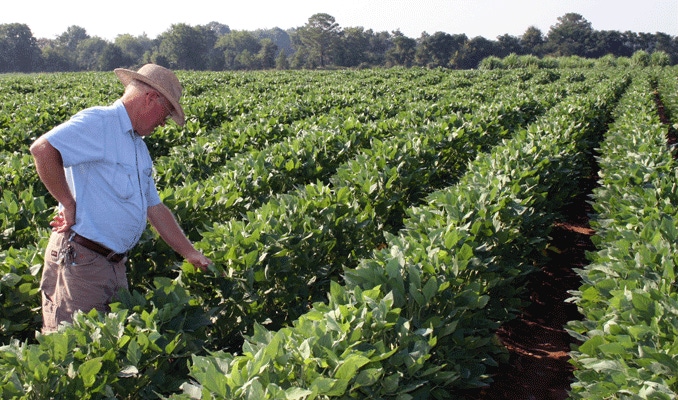
“Hi, I’m from the government and I’m here to help you.” I’m not sure where that expression originated from, but we all understand the meaning. True or not, there is a general feeling that we are all better off by less government influence.
Currently, the government influences price through USDA crop production, planting estimates, and grain stocks reports. I believe the impact to farmers on report days is increasing. Some believe we would be better served if the USDA discontinued reporting crop information. I do not believe this will solve the problem as private firms will fill the void leading to price discovery, disagreement and price volatility.
Why the anxiety?
So why does USDA have influence on price and why is this becoming a larger factor? I believe it’s because U.S. farmers have a high percentage of unsold bushels when the various USDA reports come out. Crop production numbers often show the U.S. farmer is producing a respectable crop and, typically, this is not friendly to price.
The trend of less forward price management started in 2008 when grain prices shot to never-before-seen levels. Volatile years followed culminating in the 2012 drought and resulting higher prices.
I suspect there is a direct correlation between farmer anger with USDA and the amount of forward price management that has been executed.
In my experience, those who don’t fall into the trap of losing on report days are those who know how to defend their price risk. Often we see good crops followed by a negative USDA report, and unsold bushels lose value. Can it be as simple as having enough grain sold or managed using the solid marketing tools available before a report takes equity away? The answer is yes.
I believe USDA strives to do good work, but they are not always 100% accurate. My advice is to take the time and stress badmouthing their work and replace it with becoming more educated. Specifically, become educated on forward price protection and have it in place based on your individual needs and marketing philosophy.
Too many people attack USDA after a report and subsequent price break. The time could be better spent learning price management.
Price management choices
Many believe price management choices boil down to two things: sell prior to harvest, or don’t. If these are the only two choices you have allowed for, it’s going to be a challenge to avoid the USDA trap in not having enough bushels sold prior to harvest.
The main reason this is true was evident in 2019 during planting time. A common feeling was “how can I forward price now when I am not sure I will even get the crop planted?” A legitimate concern and question. If you look back at your career, how often have you not been able to get the crop in the ground? How often have you had a significant shortfall in expected production? The answer varies, but I sense for many we get planted and produce respectable crops significantly more often than we don’t. In addition, those using crop insurance have added protection in place.
In my career I have witnessed significant droughts in 1983, 1988 and 2012. We had the floods of 1993 as well. Many areas have reported localized weather events apart from these, but these years listed were ones that impacted markets in a big way. How many years in your farmer career have lower prices been a problem? Price is the enemy to your business more often than weather events.
Starting in 2020, lets eliminate the USDA’s ability to take equity out of your farm. Gain a solid understanding of other forward pricing tools other than cash sales, which can limit your ability to be proactive during weather scares. The understanding of various marketing tools will allow you to survive a bearish USDA report or any news that is negative to price. Similarly, you must prepare for the days and reports that send prices higher. Both outcomes can and should be in your marketing plan.
As a grower you should always be rooting for higher prices. But when prices drop, your reaction should be one of relief that you have a working plan in place to defend price, instead of joining the “let’s-bash-USDA” crowd.
There is no money to be made in that crowd.
Advance Trading
Contact ATI at
800-664-2321
www.advance-trading.com/disclaimer
The opinions of the author are not necessarily those of Farm Futures or Farm Progress.
About the Author(s)
You May Also Like






